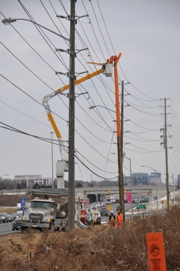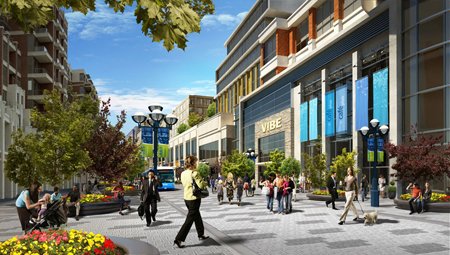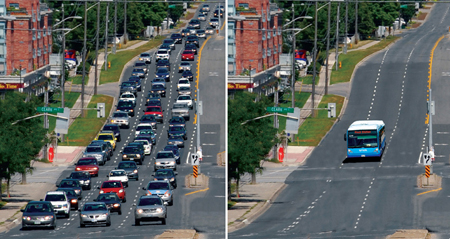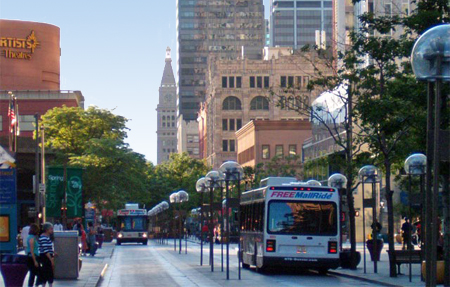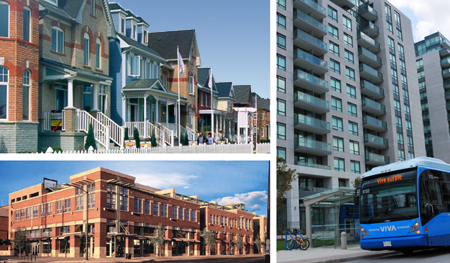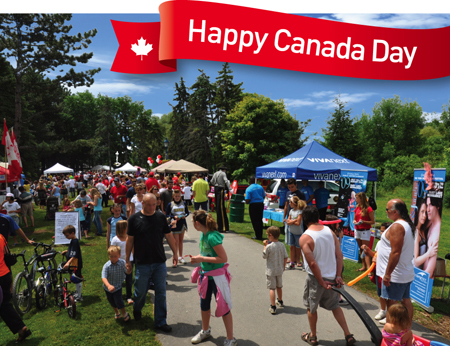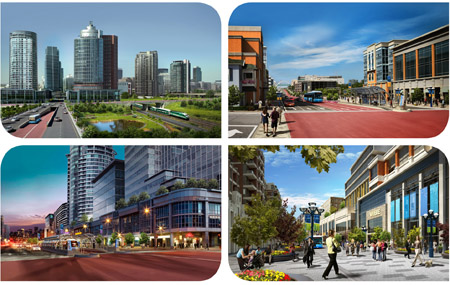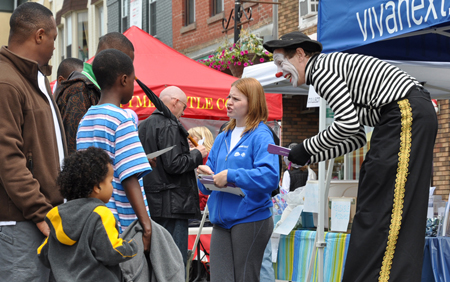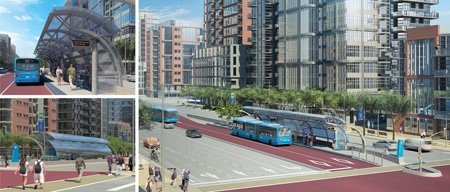
We’ve all seen examples of where a transportation system has caused a town to grow. Historically, many Ontario towns grew because they became a stop along a railway line. This was true for Markham in the late 1800s, when the Toronto and Nipissing Railway Company began stopping at stations in Markham and Unionville. Another cause for Markham’s growth was the post-Second World War baby boom and migration to the suburbs, and the building of Highway 404 in the mid-1970s. With the influx of high-tech industries, among other changes, Markham has seen an astonishing 25% population increase between 2001 and 2006, ranking Markham as one of the fastest growing municipalities in Canada.
Transportation plays a key role in growth and development, and Markham needs a system to help move the current and future population from place to place. VivaNext is building a rapid transit system along Highway 7 to give people a better transit infrastructure that will accommodate the current population and allow for future growth. As well as move people efficiently, rapidways encourage the development of transit-oriented and pedestrian friendly places to live, work and play. As you can see in the photo above, Markham’s rapidways will widen Highway 7 by two lanes and include two centre lanes dedicated to Viva vehicles and flanked by attractive architectural features and landscaped boulevards.
We’ve already started preparing for construction along Highway 7 in Markham by relocating hydro poles and other utilities to allow for road widening. If you’re interested in receiving construction bulletins and invitations to public meetings, be sure to sign up for updates.
When the snow melts you’ll see road construction begin along Highway 7, and we hope you’ll see past the short-term inconveniences and construction to the more welcoming, improved Highway 7 in Markham.

